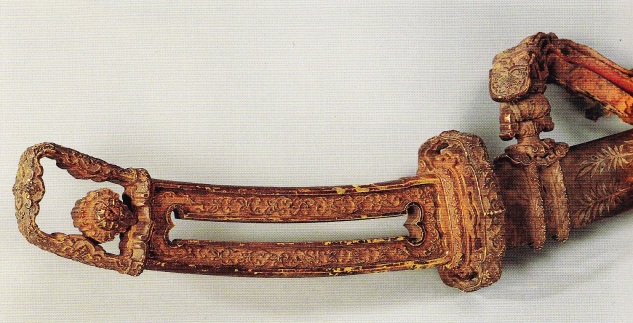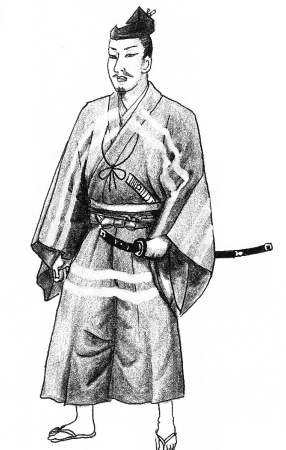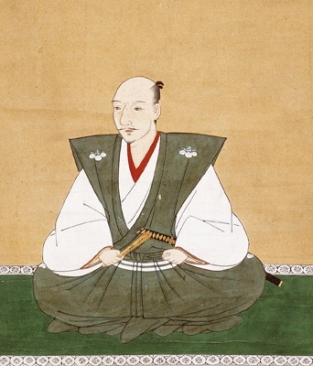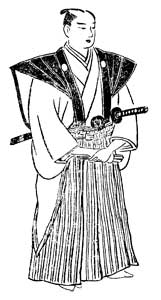Due to the length of this article, it is split up to two parts.
Today, tsuba are collected for several reasons but probably the most important one is that it triggers something in the beholder, or in other words, a certain style or look matches the viewer´s aesthetic sense. There is a major subconscious level when it comes to taste, a level that is initially shaped by genetical, environmental, and educational, but later also by cultural and social influences. But for the understanding of the different aesthetical approaches in tsuba making, we have to make a chronological excursion through Japanese history. Well the hand guard is an elementary component of a sword and when it comes to the Japanese variant, the tsuba, a lot has been said and speculated about its purpose. Some doubt that it was there to parry an opponent´s sword blow and assume that it rather prevented the swordsman´s hand from slipping onto his own blade but I am of the opinion that the tsuba fulfilled both tasks plus the task to balance the sword. The earliest tsuba of jôkotô swords were, with some exceptions, pretty plain and had, if at all, rather simple and naive decorations and this remained more or less unchanged for several centuries and about entering the Muromachi period. Don´t get me wrong, the decoration itself was often applied in a technically perfect and quite advanced manner but the designs themselves were neither bold nor outstanding from the point of view of the sword mounting seen as a whole. We have to know that until the fifteenth century, warriors, at least those of a certain rank, wore a tachi. This was, apart from the uchigatana which actually did appear much earlier and which will be addressed next, the only sword with a tsuba as accompanying swords like the koshigatana were mounted in aikuchi manner, i.e. without a tsuba, the fuchi meeting the koiguchi of the saya. Back then, the aesthetic requirements of a tachi-tsuba was, as indicated before, to match the fittings of the koshirae. Everything was in balance and en suite, i.e. featuring the same basic design, decoration, and interpretation in terms of workmanship. And this covered basically all ranks, that means the quality of a tachi-tsuba or of tachi-kanagu in general was not so much defined by artistic interpretation but by the grade of sophistication, technical perfection, and value of used raw materials. Picture 1 of a Heian period kenukigata-tachi koshirae from the possessions of the Kasuga-taisha in Nara demonstrates very good what I mean. But what we also must not overlook is the overall “appearance” of a warrior of these times. It was the time of the ô-yoroi, an armor that was made of rows of scales with countless braids and numerous other elements against which a tsuba simply did not have the chance to stand out (see picture 2). When not in battlefield or on a campaign, the usual civilian outfit of a warrior was back then, i.e. from the Heian to the end of the Muromachi period, the hitatare, a two-piece costume more or less ornate depending on occasion. To the hitatare, the very same tachi was worn, either suspended edge down with cords from the sash like when wearing armor, or just carried by hand (see picture 3). Well, higher-ranking bushi surely had several tachi, one to be worn at ceremonies, one for the actual battlefield, and one for the hitatare, but there was yet no “civilian counterpart” to the tachi.
Picture 1: kokuhô, kin-ji raden kenukigata-tachi koshirae (金地螺鈿毛抜形太刀拵), nagasa 96.3 cm
Picture 2: kokuhô, akaito-odoshi ô-yoroi (赤糸威大鎧), Kasuga-taisha
Picture 3: hitatare
The aforementioned uchigatana emerged in the Heian period but was initially restricted to lower ranking warriors and intended as plain and simple sword for guarding duties and self-defence. Uchigatana were used without tsuba but when we read between the lines of contemporary and later chronicles, we can assume that many of them must had been equipped with a hand guard as also the term tsuba-gatana (鐔刀) existed for them. We know from Heian period picture scrolls that these early uchigatana were worn thrusted edge up through the belt and varied in size, although there was the trend to somewhat longer blades to be effective for defence and self-defence. That means these uchigatana were usually not just slightly longer daggers but at least what we would classify today as wakizashi or ô-wakizashi. Please note that these early Heian and Kamakura period uchigatana were only indirectly related to the later Muromachi period uchigatana, i.e. there was not a gradual development between these two sword forms. The “rediscovering” of the uchigatana is usually explained by the drastic changes in warfare taking place over entire Muromachi period. As we know, it were turbulent times but the mentioned “rediscovering” of the more simply mounted uchigatana does not only go back to these changes in warfare. There was namely more than “just” a trend from more and more higher-ranking bushi wearing uchigatana as secondary, and equipping greater ashigaru armies with simpler swords. The rebirth of the uchigatana is also deeply connected with the then changes among the warrior class and rulership. It was the time when the bushi took over land ownership on a large scale. So they were no longer just armed guardians of someone elses land and obeying to what was decided for them in a powerplay of the shôgun, the court, and the upper clergy, they brought forth from within local military governors, the shugo-daimyô, which soon also united the civil powers of the former authorities with their military office. The result was that until the end of the Muromachi period, a decentralized state system had developed that practically completely replaced the so far central government by either the emperor or the shôgun.
With these new governmental duties, the local shugo-daimyô hegemons and their samurai vassals, which in turn had to administer smaller land units, developed a kind of strongly “military-overshadowed” semi-civilian administration. And for this, it was of course out of question to do daily duty in full yoroi armor. Was the sword worn earler to the civilan or casual hitatare for reasons of self-defense and, well, to have your sword with you, it became now the visible symbol of rank and authoritative power and eventually the status symbol of the entire warrior class per se. But going into battle meant unchangedly the wearing of a tachi, with some exceptions like lower ranking troops, lightly armed special forces, and different personal tastes. And now we reach the point in history when the golden age of the tsuba begins. As indicated, early uchigatana were with some special-order exceptions of higher ranking bushi usually plainly mounted. And with plainly mounted I mean tôshô (刀匠) and katchûshi-tsuba (甲冑師) with simple decorations in the form of naive sukashi, and later on, i.e. from about the latter half of the 15th century onwards, also with Ônin (応仁) and Heianjô (平安城) style brass ornamentation and larger, more and more sophisticated sukashi openings. The hitarare was gradually replaced along the Momoyama period by the kataginu (a sleeveless jacket with exaggerated shoulders) and hakama ensemble (see picture 4) which in turn was the forerunner of the Edo-period kamishimo (which also existed according to occasion in more or less formal versions, e.g. longer and shorter hakama) (see picture 5). And this development to the quasi “civilian samurai uniform” can´t be stressed enough when it comes to the understanding of the development of aesthetical requirements of tsuba.
Picture 4: Portrait of Oda Nobunaga wearing a kataginu. Picture 5: formal kamishimo
Dressed like this for every day duty, the tsuba was now the most obvious eye-catcher of a samurai´s appearance with which its wearer could not only express his taste and “trendiness,” but in a wider sense also his wealth and status. In short, the choice of tsuba was a big statement, and I want to compare it with the status of the car in our present-day society. Most of us are not able to afford the car of our dreams and not is everyone is into cars at all. For many it is just a means of transportation but not few see in their cars a way to display their “status,” or rather financial background. Some have the money but all they need is a reliable ride but which still has to be adequate to their social position, e.g. a premium class sedan. Others might not have the financial background but still go for a premium class sedan whilst some others don´t have the money but get their desired sports car at all costs, even if they have to drastically cut back for years. As addressed, for most of us a car is a must and so we surely check cost effectiveness and what´s on our bank account, but we still strive within these limits for something decent looking and what corresponds to our taste, or in short, what suits us best. Back to the sword world. At the very beginning of this article I was briefly referring to cultural and social influences on a person´s taste and with coming now to the fundmental aesthetic concepts in tsuba design, we again have to make an excursion, this time not through history in general but through art and cultural history in particular. Starting point when Ashikaga Takauji (足利尊氏, 1305-1358) entered Kyôto in 1336. With this, the political centre returned to the old imperial city of Kyôto after 150 years of interruption by the Kamakura-bakufu. The clash of the then there prevailing aristocratic culture with the emulating culture of the warrior class resulted in the development of Japan’s cultural and artistic history, whose aesthetic ideals have characterized the land until today. Well, peace did not last long as the northern and southern imperial dynasties fought for the succession of the throne, an era that went down in history as Nanbokuchô period. Only when Takauji´s grandson, Ashikaga Yoshimitsu (足利義満, 1358-1408, r. 1368-1394), managed to establish a compromise between the two dynasties was peace restored. Through a cleverly devised system of hierarchy and ranking among his retainers and the creation of new offices and administrative bodies, Yoshimitsu was able to keep in check rivalling families and alliances and provide a basis for political stability and peace. A milestone for the subsequent cultural developments was that Yoshimitsu appointed himself as a tributary vassal of the second emperor of the Ming Dynasty in the eighth year of Ôei (応永, 1401). With this, three years later the official trade was able to be launched between Japan and Ming-China, which would last until the mid-16th century. Some years earlier Yoshimitsu started to prepare his country estate in the northern Kitayama district (北山) of Kyōto for his time in retirement from the post of shôgun. The transfer of Yoshimitsu´s centre of rule to Kitayama was the name giver to the entire subsequent cultural heydays of the co-called “Kitayama culture.”
As already mentioned, with the Ashikaga-bakufu´s entering Kyôto, two cultural worlds collided. The warrior class had been continuously seeking for recognition by the cultural world since their move to Kamakura, but they were constantly lagging behind the refined aristocracy. Because this self-contained culture was unattainable, even by the available financial resources, the bushi started to focus more on objects imported from the mainland, i.e. the karamono (唐物, lit. “Chinese things”). Both Buddhism and tea served as the main catalyst for this process. Buddhism practiced in Japan during the Heian period was elitist, strongly ritualized, and way too complex to be understood by ordinary citizens and, in many cases, by the warrior class too. Thus, a more “secular” interpretation of Buddhist teachings emerged throughout the succeeding Kamakura period. This was the classical period of Amidism whose doctrine was simplified in the hope of redemption in believing in Amida (阿弥陀, Amitābha) by reciting his name (nenbutsu, 念仏). The second major development in Buddhism during the Kamakura period was the emergence of independent Zen sects. It was especially Zen Buddhism, with its favour of direct self-realization through meditation, rigid mental exercises to leave behind one’s own self, the non-renunciation of everyday life, and the willing acceptance of death that made it quasi tailor-made for the warrior class. The key figures in the connections with China had always been the Buddhist monks. During the Nara and Heian period Japan mainly imported from the mainland political ideas for the erection of its own state. But with the Kamakura period, the influence shifted more and more towards cultural and artistic achievements, and the warrior class had to rely on the support of the monks who had an abundant amount of knowledge achieved through religious contacts with the mainland for centuries.
At the time of the first Ashikaga shōguns, the balance of power was everything but settled. Any bigger clan would have been able – alone or in association with others – to cause significant problems for the Ashikaga. So it was necessary to openly display ones power and wealth quasi as a deterrent, and not only in the military field. A very important tool for the fostering and initiation of alliances, as well as for the presentation of ones taste and understanding of art, were the popular tea parties (cha-yoriai, 茶寄合) and tea contests (tôcha, 闘茶). These tea contests, based on the so-called mono-awase (物合) of the Heian-period court aristocracy, consisted of different things (mono, 物) such as the pairing of shells, flowers, fans or paintings (awase, 合わせ), it also included singing and poetry. The challenge of the tea contest then was to taste different types of tea and guess which tea was of the highest quality. The winner was opulently awarded. The origins of the tea contest date to the Sòng-era China (宋, 960-1279) and, accordingly, such contests were equipped with Chinese-style utensils and furniture. The most precious and exquisite art objects from the mainland were proudly shown to the guests. As mentioned, in order to display ones wealth, these tea parties had to be held in the greatest possible pomp and luxury, roughly comparable to the ball and salon company of the European upper class of the 19th century. Yoshinori (足利義教, 1394-1441, r. 1428-1441), the sixth Ashikaga-shōgun after Takauji, found himself confronted with increasing unrests among the aforementioned military shugo governors of the provinces. New alliances were formed, families wiped out, but about hundred years after Yoshimitsu, the political power of the Ashikaga-shōgun was as insignificant as the political power of the emperor during the Kamakura period. Every faction saw a chance of gaining power and so in the first year of Ônin (応仁, 1467) a dispute over the succession of the shôgun aroused within the Ashikaga family and their allies. This resulted in a decade of constant warfare, the so-called “Ōnin War” (Ônin no ran, 応仁の乱) which resulted, firstly, in the end of the Shogunate and, secondly, in the beginning of the Sengoku period where the already mentioned more and more decentralized state system under the now independent military governors began to form. Within the turmoil’s of the Ônin War, the then shôgun Yoshimasa (足利義政, 1436-1490, r. 1449-1473) retired on his lands in Kyôto´s north-eastern Higashiyama district (東山). Like Yoshimitsu´s Kitayama, Higashiyama also became synonymous for the cultural current that originated and developed in this period, the so-called “Higashiyama Culture.”
In the period between Yoshimitsu and Yoshimasa, the aesthetical senses of the warrior class changed, mostly due to the uncertain times, the outbreak of the Ônin War, and the increasing adoption of Zen Buddhism among the bushi. This strongly influenced the tea parties which were still important for maintaining contacts with allies and, in some cases, also with the enemies. As mentioned, the early parties resembled ostentatious feasts where tea was served rather “on the side,” the meetings of the Higashiyama era were much more similar to the establishments of the European study or smoking room of the second half of the 19th century. The men of the European upper class withdrew in a smaller group to the study after the “official” meeting, to smoke and drink alcohol while discussing politics and business, that means topics which were not suited to discus at table. In Japan it was exactly the other way round because, during the secluded tea ceremony, profound topics like politics and the like were inappropriate. In practical terms, the ceremonies took place in the so-called kaisho (会所, lit. “meeting point”) areas of the residences. The residences themselves were modelled on the palace buildings, an architecture which is called shinden-zukuri (寝殿造). Gradually, these kaisho were out-housed to an extension, and later an annex specially constructed for this effect. Influenced by Zen Buddhism, the high-ranking warriors started to furnish these extensions in the style of the monk’s modest studies or drawing rooms (sho´in, 書院). This gave this architectural style the name sho´in-zukuri (書院造). The simpler style of tea houses developed in parallel with sho´in-zukuri but it were first and foremost the famous 16th century tea masters like Sen no Rikyû (千利休, 1522-1591) who established the tea house as we know of today.
Well, the final phase of the Sengoku period saw years of political unification, carried out successively by Oda Nobunaga, Toyotomi Hideyoshi, and Tokugawa Ieyasu. Nobunaga ruthlessly followed his straightforward policy. He eleminated all enemies, brought an economic reform, and instituted free markets, markets that before had been under the iron grip of monopolizing guilds. But he was not able to witness the completion of his plans. His “successor” Hideyoshi was the first to maneuver the decentralized ship Japan back to a central government but he too wasn´t living enough to see that happen. It was Ieyasu who ended all this and brought the country peace, although not right from the start of his Tokugawa-bakufu. Anyway, the time from Nobunaga “ending” the Sengoku era to Ieyasu´s wiping out the last remaining Toyotomi at Ôsaka in 1615 is referred to as Momoyama period. This period of about four decades, or the first three peaceful decades in particular, rang in the development of large urban centers and the rise of the merchant class. After a century of not constant but unpredictable battles and feuds, the land had been bled dry and with the changes the warlords saw or tried to see in Nobunaga, an atmosphere of renewal was prevailing, although it was still a strongly militaristic time and much what the shugo-daimyô did was about creating alliances and steeling themselves for the next turbulent times. This meant erecting castles which had to be practical but also luxurious enough to serve as “venue” for negotiations that impress all present parties. And this trend towards pomp defines what we today refer to as “Momoyama Culture.” Under the Momoyama Culture, the preceding Higashiyama Culture ripened, the earlier Kitayama Culture was assimilated and “japanized,” and most of the ruling class was open to all new, e.g. European influence.
To be continued…




